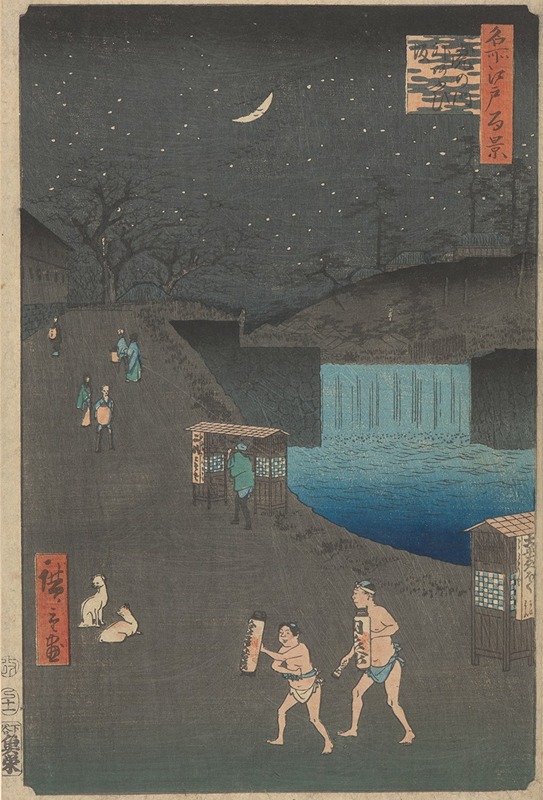
Tora-no-mon-gai; Aoi Hill, Outside the Tiger Gate [Tora-no-mon]
A hand-painted replica of Andō Hiroshige’s masterpiece Tora-no-mon-gai; Aoi Hill, Outside the Tiger Gate [Tora-no-mon], meticulously crafted by professional artists to capture the true essence of the original. Each piece is created with museum-quality canvas and rare mineral pigments, carefully painted by experienced artists with delicate brushstrokes and rich, layered colors to perfectly recreate the texture of the original artwork. Unlike machine-printed reproductions, this hand-painted version brings the painting to life, infused with the artist’s emotions and skill in every stroke. Whether for personal collection or home decoration, it instantly elevates the artistic atmosphere of any space.
Andō Hiroshige, a renowned Japanese ukiyo-e artist of the Edo period, is celebrated for his landscapes and depictions of everyday life in Japan. One of his works, "Tora-no-mon-gai; Aoi Hill, Outside the Tiger Gate [Tora-no-mon]," exemplifies his mastery in capturing the essence of Japanese scenery and culture.
Hiroshige was born in 1797 in Edo, now Tokyo, and became a prominent figure in the ukiyo-e genre, which translates to "pictures of the floating world." This art form flourished from the 17th to the 19th century, focusing on subjects such as landscapes, theater, and pleasure quarters. Hiroshige's work is particularly noted for its innovative compositions and use of color, which influenced Western artists like Vincent van Gogh and Claude Monet.
"Tora-no-mon-gai; Aoi Hill, Outside the Tiger Gate [Tora-no-mon]" is part of Hiroshige's series of prints that depict various locations around Edo. The title refers to Tora-no-mon, a historical gate in Edo, and Aoi Hill, a nearby area. The print captures the serene beauty of the landscape, a hallmark of Hiroshige's style. His ability to convey the atmosphere and mood of a place is evident in the delicate lines and subtle color gradations used to depict the natural scenery.
Hiroshige's landscapes often include elements that reflect the changing seasons, weather conditions, and times of day, which are skillfully rendered to evoke a sense of tranquility and harmony with nature. In this particular work, the composition likely features a view of the gate and the surrounding environment, inviting the viewer to appreciate the peaceful coexistence of human-made structures and the natural world.
The ukiyo-e technique involves woodblock printing, a meticulous process requiring collaboration between the artist, carver, printer, and publisher. Hiroshige would create the initial design, which was then carved into wooden blocks by skilled artisans. Each color in the print required a separate block, and the final image was produced by pressing paper onto the inked blocks in a precise sequence. This collaborative effort resulted in vibrant, detailed prints that were widely distributed and affordable for the general public.
Hiroshige's work, including "Tora-no-mon-gai; Aoi Hill, Outside the Tiger Gate [Tora-no-mon]," played a significant role in documenting and popularizing the landscapes of Japan during the Edo period. His prints not only served as artistic expressions but also as visual records of the country's geography and cultural landmarks.
While specific details about this particular print may be limited, it remains an important example of Hiroshige's contribution to the ukiyo-e tradition and his influence on both Japanese and Western art. His legacy endures through his ability to capture the fleeting beauty of the world around him, inviting viewers to pause and appreciate the subtle wonders of everyday life.





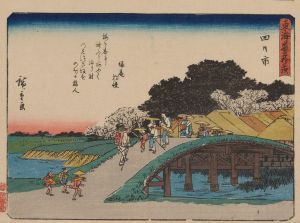

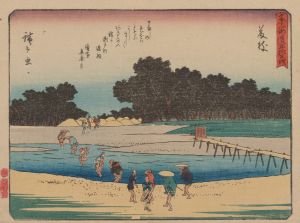
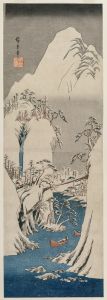


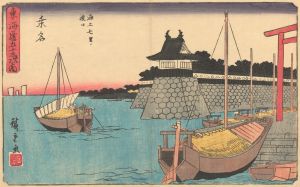
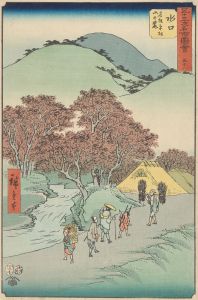
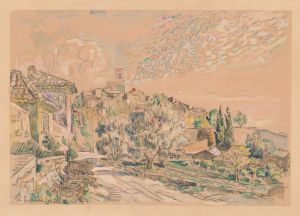
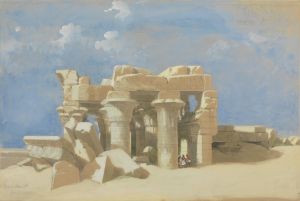

![Temple of Dandour [Dendûr], Nubia.](/imgs/217545/s/david-roberts-temple-of-dandour-dendur-nubia-8921547f.jpg)
![Temple of Edfou [Idfû], ancient Appolinopolis, Upper Egypt.](/imgs/217546/s/david-roberts-temple-of-edfou-idfu-ancient-appolinopolis-upper-egypt-2a77d2d6.jpg)